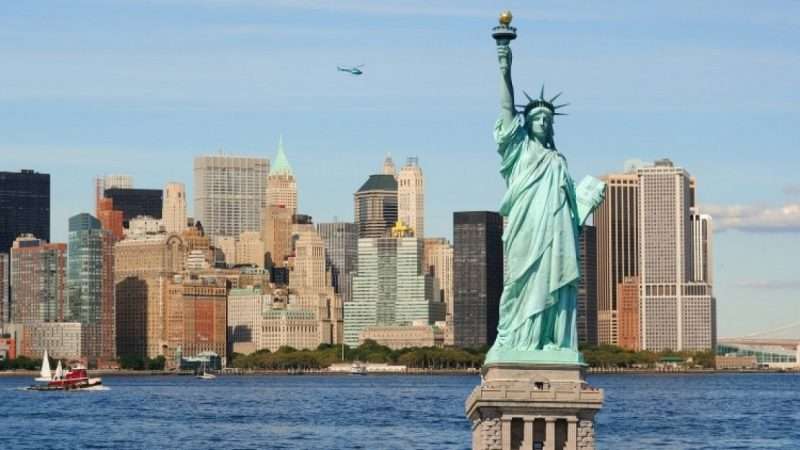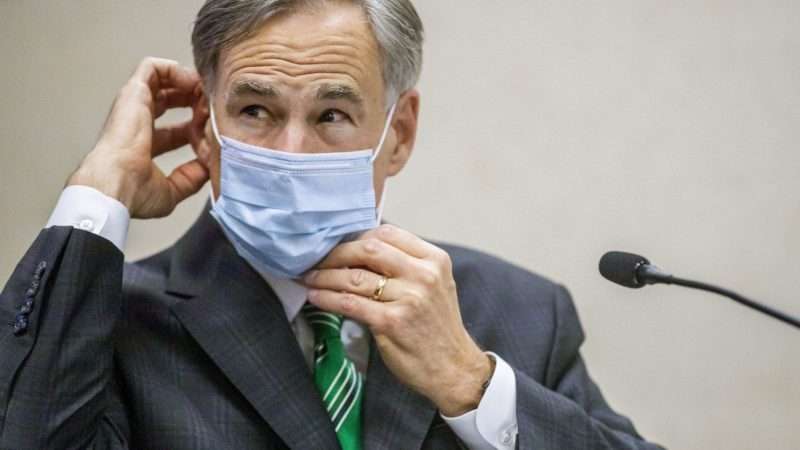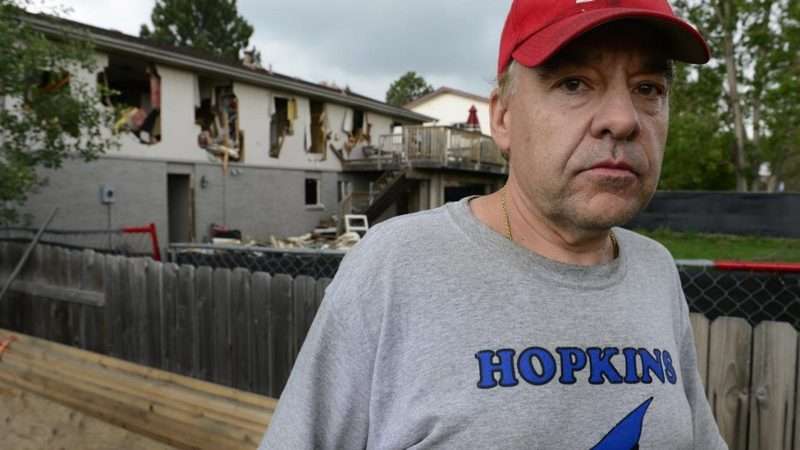“More than four months into fighting the coronavirus in the United States,” The New York Times says, “the shared sacrifice of millions of Americans suspending their lives—with jobs lost, businesses shuttered, daily routines upended—has not been enough to beat back a virus whose staying power around the world is only still being grasped.” Most Americans, regardless of their views about the lockdowns most states imposed in response to the epidemic, probably would concur with that conclusion. But did the lockdowns fail because they were imposed too late and lifted too soon, or did they fail because they were fundamentally misconceived? On that question there is much disagreement.
Prior to last spring, the idea that the mass quarantine of overwhelmingly healthy, noninfectious people was an appropriate response to a viral epidemic would have struck most of us as highly implausible. During the “Spanish flu” epidemic of 1918, which was far more deadly than COVID-19 has proven to be, many American cities banned large public gatherings, closed schools, and shut down businesses, such as movie theaters and pool halls, where people gathered indoors in close proximity to each other. But the restrictions of that era were not nearly as pervasive or as broad as the measures implemented in response to COVID-19, which closed all but a select few businesses and confined hundreds of millions of people to their homes except for government-approved purposes.
Those orders, which entailed enormous economic and social costs, were never sustainable over the long term. And once they were lifted, we were bound to face the challenge that confronts us now: how to deal with a virus that poses a negligible risk to most of the population but a serious risk to many people with preexisting medical conditions, a virus that people often carry without realizing it because it can be transmitted before symptoms appear, when symptoms are so mild that they cause little concern, or when symptoms never show up at all.
Lockdown advocates understood that the virus would still be with us after the sweeping restrictions on movement and economic activity were removed. But they argued that lockdowns would prevent local health systems from being overwhelmed by COVID-19 patients, which would endanger not only their lives but the lives of people with other illnesses. That was a scary prospect, although it was probably exaggerated even in places that were hit especially hard by the epidemic. New York City, for example, ended up with more ventilators and hospital capacity than it actually needed.
Even if lockdowns merely delayed COVID-19 cases rather than actually preventing them, supporters of the policy also said, the restrictions would buy time for treatments that could make the disease less deadly. If you knew that you were going to catch the virus at some point, Johns Hopkins surgeon Marty Makary asked during a recent Soho Forum debate, wouldn’t you rather get it later in the epidemic, after doctors had a chance to figure out which treatments worked best? That strikes me as a pretty good argument, although the benefit Makary imagines has to be balanced against the medical cost of restrictions that delayed potentially lifesaving diagnosis and treatment of other diseases.
Lockdown supporters also emphasized that slowing transmission of the virus would buy time to develop the testing capacity required to identify carriers, trace their contacts, and quarantine them. We missed that opportunity early in the epidemic, thanks largely to a government-engineered testing fiasco. Having learned from that mistake, it was thought, states could use the breathing space provided by lockdowns to expand their testing and tracing capabilities. But as the Times notes, even states that were relatively well-prepared on that score are doing a pretty pitiful job of testing and tracing, a mission that seems daunting given the enormous gap between total infections and confirmed cases.
All of these arguments assumed that lockdowns would have enough of an impact on virus transmission to justify the huge burdens they imposed. But it is by no means clear that they did.
Cellphone data show that Americans were already moving around less before they were legally required to do so. Nationwide, driving, walking, and use of mass transit fell precipitously in early March, before any of the lockdowns. That downward trend continued until late March, when Americans started moving around more, even as they were still subject to lockdowns. The same basic pattern was apparent even in states, such as Arkansas, Iowa, Nebraska, North Dakota, South Dakota, and Wyoming, that never issued stay-at-home orders. Foot traffic data show similar trends: a sharp decline beginning in early March, followed by an increase beginning in late March and early April.
It is possible that lockdowns accelerated the downward trends in mobility and delayed or attenuated the upward trends. But the data suggest that the trends were driven mostly by voluntary changes in behavior. It is also possible that foreclosing certain options when people ventured outside their homes reduced virus transmission even when they started doing that more. In states with broad business closure orders, many people were not going to work, and no one was allowed to go inside bars or restaurants for drinks or food. It seems reasonable to expect that such restrictions would reduce virus transmission to at least some extent.
Yet in Texas, where a statewide lockdown was imposed on April 1, that order had no obvious impact on the number of new COVID-19 cases reported each day, which continued to trend upward through April. And after the stay-at-home order expired on April 30 and businesses began to reopen, more than a month went by before there was an explosion in cases, even though the median incubation period for COVID-19 is four or five days.
Houston writer Mimi Swartz, in a New York Times op-ed piece published yesterday, blames Phase 3 of Gov. Greg Abbott’s reopening plan, which “allowed many businesses to reopen at 75 percent capacity on June 12.” The timing seems right, since daily new cases began to rise precipitously four or five days later. The number jumped more than threefold between June 16 and June 25, from 2,622 to nearly 6,000, before falling slightly to 5,357 yesterday.
A longer view shows that newly identified cases had already risen dramatically since late May, from 589 on May 26 to more than 2,500 on June 10—a fourfold increase. That increase may have had something to do with gatherings on Memorial Day weekend and the mass protests against police brutality that followed soon after.
But let’s say Swartz is right that increasing the number of people businesses are allowed to serve—a decision that Abbott reversed for restaurants on Friday, when he also ordered bars closed—transformed what might have been a one-time jump into a persistent upward trend. Doesn’t that imply that letting restaurants operate at 50 percent of capacity (the limit to which Abbott reverted) rather than 75 percent is consistent with keeping the epidemic under control? And doesn’t that imply that the original order, which prohibited all restaurant dining, went farther than necessary?
I honestly don’t know the answer. But this is the sort of question that politicians conspicuously failed to ask when they shut down the economy in the name of flattening the curve.
Texas, according to lockdown supporters, did pretty much everything wrong: It closed businesses too late, allowed them to reopen too soon, and failed to develop testing and tracing capacity enough to make a real difference. But what about California, which led the nation in ordering businesses to close and telling people to stay home and has been only gradually lifting those restrictions? Newly confirmed cases are also rising dramatically there, from 2,108 on June 15 to 7,149 on June 23—a more-than-threefold increase similar to what Texas saw during the same period, although that number had dropped to 4,810 as of June 27.
California began allowing dine-in restaurants to reopen on May 8. The state has not imposed a hard cap on occupancy, focusing instead on physical distancing requirements. Some local governments are being more cautious. In San Francisco, for example, restaurants were allowed to reopen on June 15, but only for outdoor dining. The state allowed bars, wineries, breweries, hotels, bowling alleys, and miniature golf courses to start reopening on June 12 in counties that met specified epidemiological targets.
Can that last decision be blamed for the recent surge in cases? It seems unlikely, given how gradually these businesses are actually reopening. In any case, it is hard to put much stock in the argument that Texas has been exceptionally reckless when even a super-cautious state like California is seeing similar increases in newly identified infections.
As in Texas, the number of new daily cases in California rose steadily during the lockdown, although supporters of that policy presumably would argue that the number would have risen more otherwise. According to Youyang Gu’s estimates, California’s reproduction number—the number of people infected by the average carrier—was 1.71 in early February. It began falling significantly before the statewide lockdown was imposed on March 18 and continued falling until mid-April, when it settled around one—the threshold for a growing epidemic. The number started rising in mid-May, about a week after California began to reopen, and now stands at 1.09. Those estimates are consistent with the idea that the lockdown helped reduce virus transmission, if only by reinforcing a preexisting trend.
In Texas, by contrast, the decline in the reproduction number happened almost entirely before the statewide lockdown, and the number began rising before the lockdown was lifted. Gu’s estimate puts it at 1.08 today, slightly lower than California’s number. If California was more successful at reducing virus transmission because it imposed a lockdown earlier and began to lift it later and more carefully, that success is not reflected in these estimates.
It is certainly plausible that lockdowns helped slow the spread of COVID-19 by limiting the choices of people who were not inclined to follow social distancing guidelines. But the size of the policy’s marginal contribution is uncertain, and it is clear that government action is only part of this story, which is largely about how people voluntarily responded to the threat posed by the epidemic.
The evidence suggests that Americans initially changed their behavior in striking ways, then recalibrated their reaction as it became clear that we would be living with this virus for a long time. Many people—especially those whose own risk of dying from COVID-19 is very low—probably would have become increasingly impatient with pandemic-inspired limits on their lives even if politicians had never deprived them of their livelihoods and ordered them to stay home. But the bitter experience with sweeping and frequently arbitrary government-imposed restrictions seems to have left many Americans less willing to take even relatively modest precautions.
“There was ‘real hubris’ on the part of public health officials at the very start,” the Times says, quoting Vanderbilt University infectious disease specialist William Schaffner. Those officials, according to the Times, believed “the United States could lock down and contain the virus as China had,” and “that futile hope helped create an unrealistic expectation that the shutdown, while intense, would not be for long, and that when it was lifted life would return to normal.”
Now that we have emerged from lockdowns with no real confidence that they actually reduced the ultimate death toll, many people are understandably asking what the point was. “Many Americans started in the pandemic with a strong feeling of solidarity, not unlike the days after Sept. 11, 2001,” the Times observes. “They closed their businesses, stayed inside, made masks and wiped down their groceries. In a country often riven by politics, polls showed broad agreement that shutting down was the right thing to do. But months of mixed messages have left many exhausted and wondering how much of what they did was worth it.”
They are right to wonder.
from Latest – Reason.com https://ift.tt/2BQ6L4d
via IFTTT





